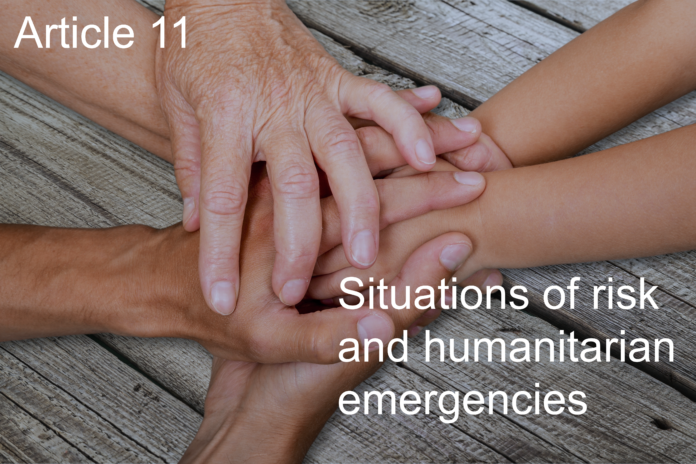‘A strong Britain in an age of insecurity: the national Security Strategy 2010’[1] makes no mention of any strategies or plans for disabled people. The document lists threats of armed conflict, bio-chemical attacks, terrorist attacks and natural disasters. The Civil Contingencies act (2004)[2] and Duty to Communicate with the Public: a ten step guide[3] do not deal with the complexity of issues that many disabled people may face.
While the ‘Evacuation and Shelter Guidance’ (2014)[4] suggests that adapted/accessible transport may not be available, in which case individuals are expected to use their own personal transport. This assumes that all disabled people needing adapted/accessible transport will have their own transport–this is simply not the case. Lack of personal means of transport will be exacerbated through the removal of mobility vehicles in the change from Disability Living Allowance to Personal Independence Payment. As a result of this change 148,000 people are expected to lose the personal use of an adapted/accessible mobility vehicle[5].
Britain has been recently hit by floods in a number of areas. Information on flooding is not provided in accessible formats.[6] Communications and information are therefore inadequate.
[1] https://www.gov.uk/government/uploads/system/uploads/attachment_data/file/61936/national-security-strategy.pdf
[2] https://www.gov.uk/preparation-and-planning-for-emergencies-responsibilities-of-responder-agencies-and-others#emergency-planning
[3] https://www.gov.uk/government/uploads/system/uploads/attachment_data/file/60906/10_step_cycle.pdf
[4] https://www.gov.uk/government/uploads/system/uploads/attachment_data/file/274615/Evacuation_and_Shelter_Guidance_2014.pdf
[5] Personal Independence Payment) Regulations 2013 www.parliament.uk/briefing-papers/SN06538.pdf
[6] http://www.hpa.org.uk/Topics/EmergencyResponse/ExtremeWeatherEventsAndNaturalDisasters/EffectsOfFlooding/




